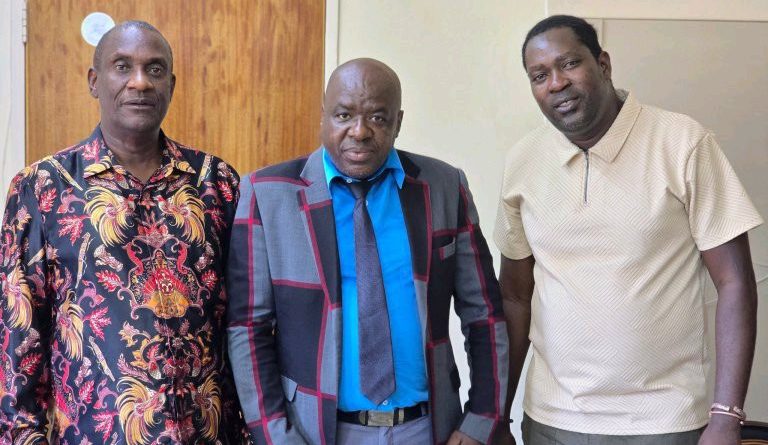Chief Hwenje’s survival opens debate on Zanu PF’s forgotten propaganda voices
Chief Hwenje, the Zanu PF praise singer whose real name is Admire Sanyanga Sibanda, has reappeared in public, putting an end to weeks of speculation about his death.
Hwenje, known for his songs that glorify President Emmerson Mnangagwa, was seen this week alongside Midlands Provincial Affairs Minister Owen Ncube, dismissing claims that he had died of cancer. Last month, Hwenje had revealed his cancer diagnosis, which sparked public criticism of Zanu PF for allegedly exploiting him.
In response to the outcry, presidential spokesperson George Charamba announced that the ruling party had flown Hwenje to South Africa for treatment. However, the lack of photographic evidence from his treatment fueled rumours that he had been abandoned by the party.
On Friday, Hwenje broke his silence through a post on X (formerly Twitter), declaring himself “fit and strong” after meeting with Owen Ncube. He also made a public performance at the commissioning of the Shurugwi-Mhandamabwe Road, signalling his return to the spotlight.
Chief Hwenje rose to fame in 2017 after the military coup that ended Robert Mugabe’s 37-year rule. His popular songs, including Garwe Rauya (“The Crocodile Has Come”), became rallying cries for Mnangagwa’s supporters. However, Hwenje’s story is not unique in Zanu PF’s history of using artists for propaganda.
In the early 2000s, musician Last Chiyangwa, popularly known as Tambaoga, gained fame with Rambai Makashinga (“Remain Resilient”), a song that justified controversial land seizures. Despite his loyalty, Tambaoga now lives in poverty, a harsh reminder of the risks of aligning too closely with the party.
Similarly, the late Dickson Chingaira, known as Cde Chinx, used his music to advance Zanu PF’s liberation war message. Yet, in his final years, Chinx struggled financially, with limited support for his medical needs.
Chief Hwenje’s reappearance may quiet death rumours for now, but it raises concerns about how long he will remain in Zanu PF’s good books before he suffers a fate similar to Tambaoga and Cde Chinx. While he continues to perform at state events, his story serves as a reminder of the cost artists pay when their work becomes a political tool.
Source:




